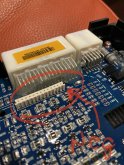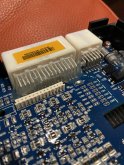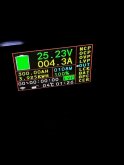yocor103086
New Member
- Joined
- Jan 29, 2020
- Messages
- 10
That's all you can get from the BYD BMS? Just the V's? I thought for sure there would be some temp numbers coming in. Do you have access to the pins that the rest of wires connect to on the 32pin POS connector? I think after the 8 easy V ones, there are only 10 others used.
I have a few arduinos also maybe take a crack at this, did you just use breadboard jumpers to tap the connects?
I already just bypassed it all and went with an external BMS.

BYD BMS
A no cut, no splice, plug-n-play. It has a screen, Bluetooth, and more settings in the app than we know what to do with. Will already reviewed this BMS. The Inside wires: The Outside Wires: Conclusion: Molex Micro-Fit 3.0 430251000 10POS 3mm Molex Micro-Fit 3.0 or 1729521001...diysolarforum.com
I’d guess there is more data than just the voltages. But that’s all I hooked up to the board. Not sure what pins are for the temperature sensors or what type of sensor they are using. If you can determine that for me I'll get some similar ones and hook them up.
I suspect my board isn't balancing because I don't have the temperature sensors hooked up. Maybe some of the data indicates when it is balancing a cell? I don't know.
Yes, you can just use breadboard jumpers to tap the connectors. I only had a couple at the time so I ended up soldering to test pads on the board.
I see this not as a replacement for an external BMS but rather an easy way to gather the data from all of your BMU's into one central location. From there you could do whatever you want with it, data log it, display it, text or e-mail alerts to your phone, etc. Keep in mind once you have an Arduino on your CAN network you could also pass any of that data on to another device that talks CAN as well, such as a charge controller.






